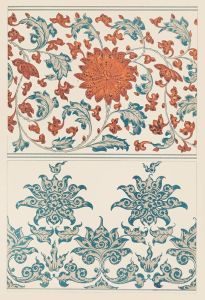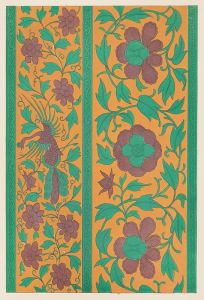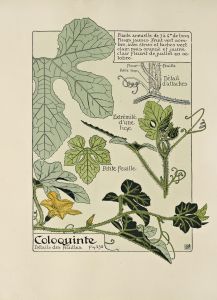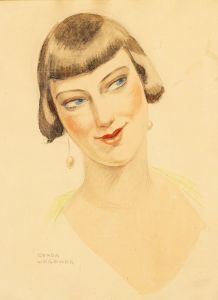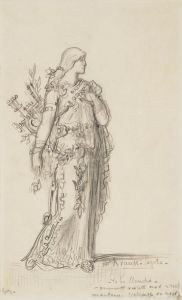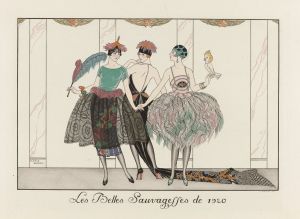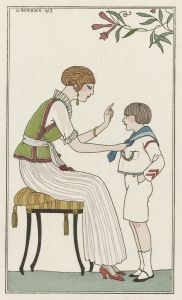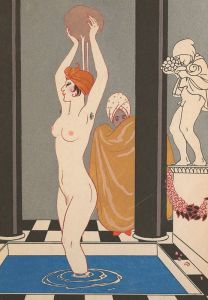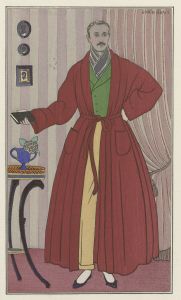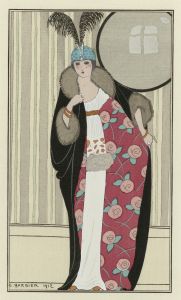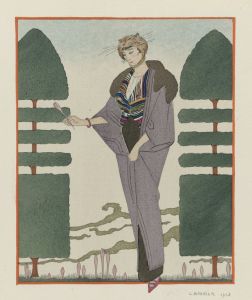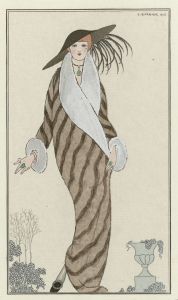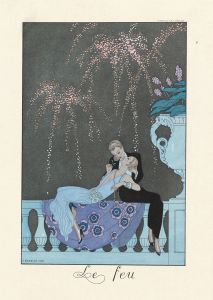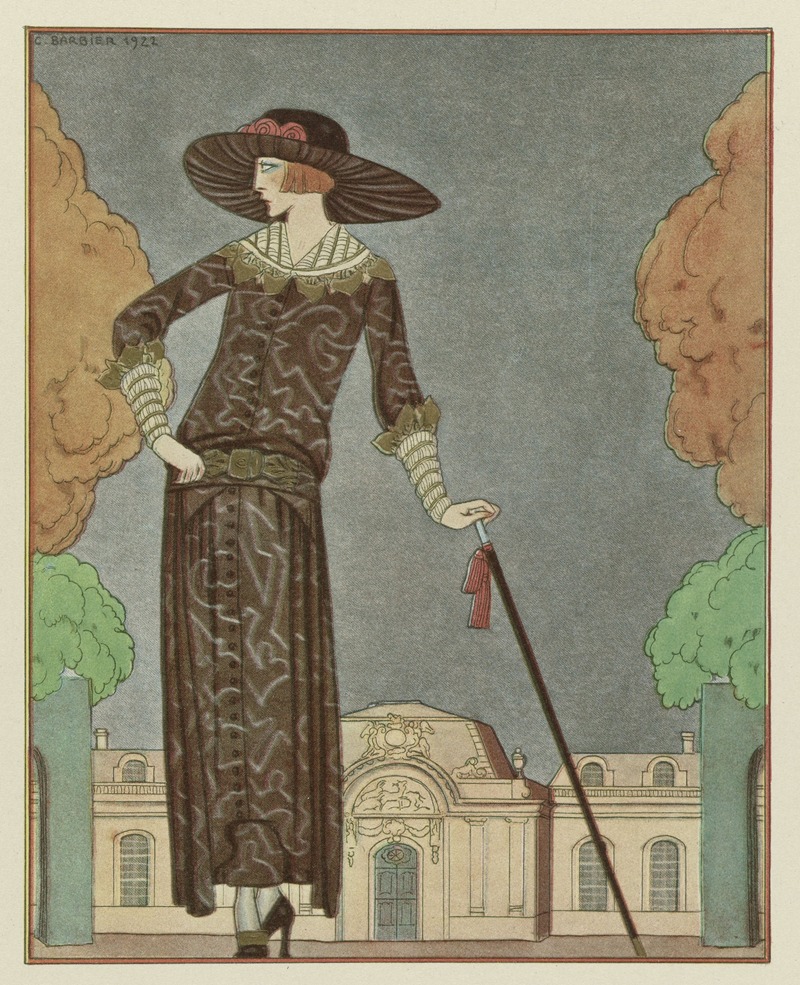
La promeneuse mélancolique ; Robe d’après-midi, de Beer
A hand-painted replica of George Barbier’s masterpiece La promeneuse mélancolique ; Robe d’après-midi, de Beer, meticulously crafted by professional artists to capture the true essence of the original. Each piece is created with museum-quality canvas and rare mineral pigments, carefully painted by experienced artists with delicate brushstrokes and rich, layered colors to perfectly recreate the texture of the original artwork. Unlike machine-printed reproductions, this hand-painted version brings the painting to life, infused with the artist’s emotions and skill in every stroke. Whether for personal collection or home decoration, it instantly elevates the artistic atmosphere of any space.
George Barbier was a prominent French illustrator and designer, known for his significant contributions to the Art Deco movement during the early 20th century. Born in Nantes, France, in 1882, Barbier became one of the most celebrated illustrators of his time, renowned for his elegant and sophisticated style. His work often featured in fashion magazines, books, and theater designs, capturing the essence of the Art Deco era with its emphasis on luxury, glamour, and modernity.
"La promeneuse mélancolique; Robe d’après-midi, de Beer" is one of Barbier's notable illustrations, showcasing his distinctive artistic style. This piece exemplifies his ability to blend fashion illustration with fine art, a hallmark of his career. Barbier's work often depicted fashionable figures in elaborate settings, characterized by their graceful lines, vibrant colors, and intricate details.
The illustration "La promeneuse mélancolique" translates to "The Melancholic Walker," suggesting a narrative or emotional depth to the piece. The title "Robe d’après-midi, de Beer" indicates that the artwork features an afternoon dress designed by Beer, a reference to the fashion house or designer associated with the garment. This connection to fashion highlights Barbier's role in the fashion industry, where he frequently collaborated with designers to bring their creations to life through his illustrations.
Barbier's illustrations were not just about showcasing clothing; they were about creating a mood and telling a story. His work often featured elegant women in serene or contemplative poses, set against lush, decorative backgrounds. This approach is evident in "La promeneuse mélancolique," where the figure's pose and expression convey a sense of introspection or wistfulness, enhanced by the detailed rendering of the dress and surroundings.
Throughout his career, Barbier worked with various fashion designers and publications, including the likes of Paul Poiret and the magazine "Gazette du Bon Ton." His illustrations were instrumental in popularizing the Art Deco style, characterized by its bold geometric patterns, rich colors, and luxurious materials. Barbier's work captured the spirit of the 1920s and 1930s, a period marked by significant social and cultural change, where fashion and art intersected in new and exciting ways.
In addition to his fashion illustrations, Barbier also contributed to theater and ballet, designing costumes and sets that reflected his artistic vision. His versatility as an artist allowed him to explore different mediums and styles, making him a key figure in the Art Deco movement.
George Barbier's legacy continues to influence contemporary fashion and illustration, with his work celebrated for its timeless elegance and artistic innovation. "La promeneuse mélancolique; Robe d’après-midi, de Beer" remains a testament to his skill as an illustrator and his ability to capture the beauty and complexity of the human form within the context of fashion and art.





